Scotch Pine
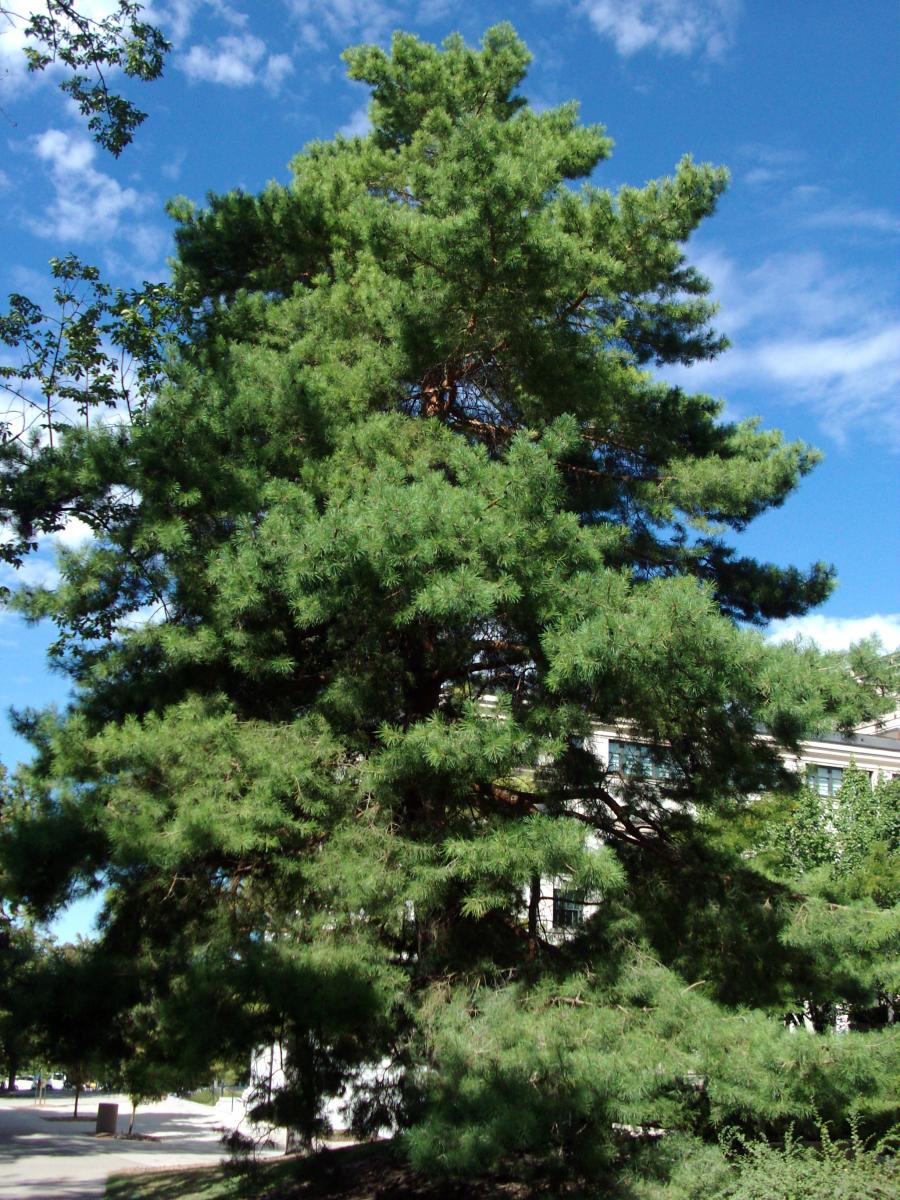

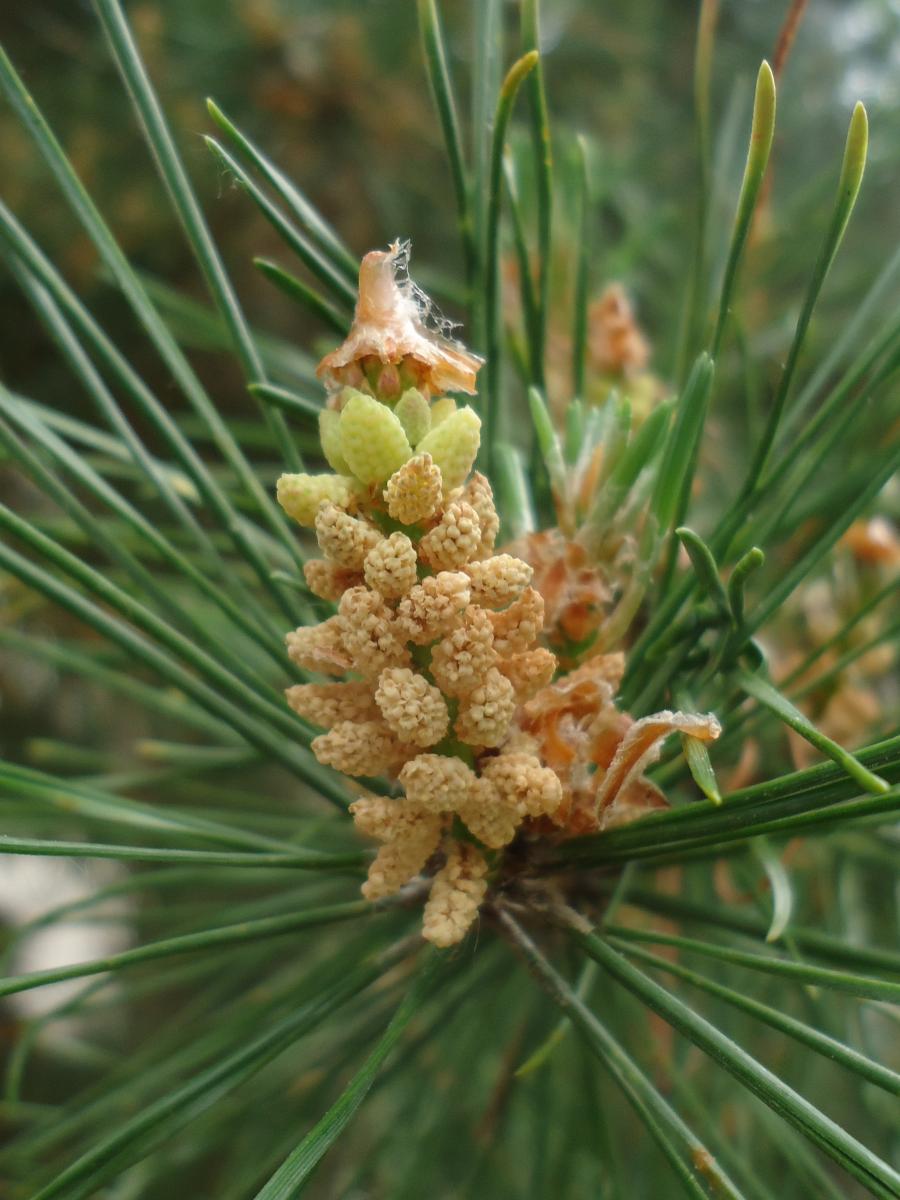

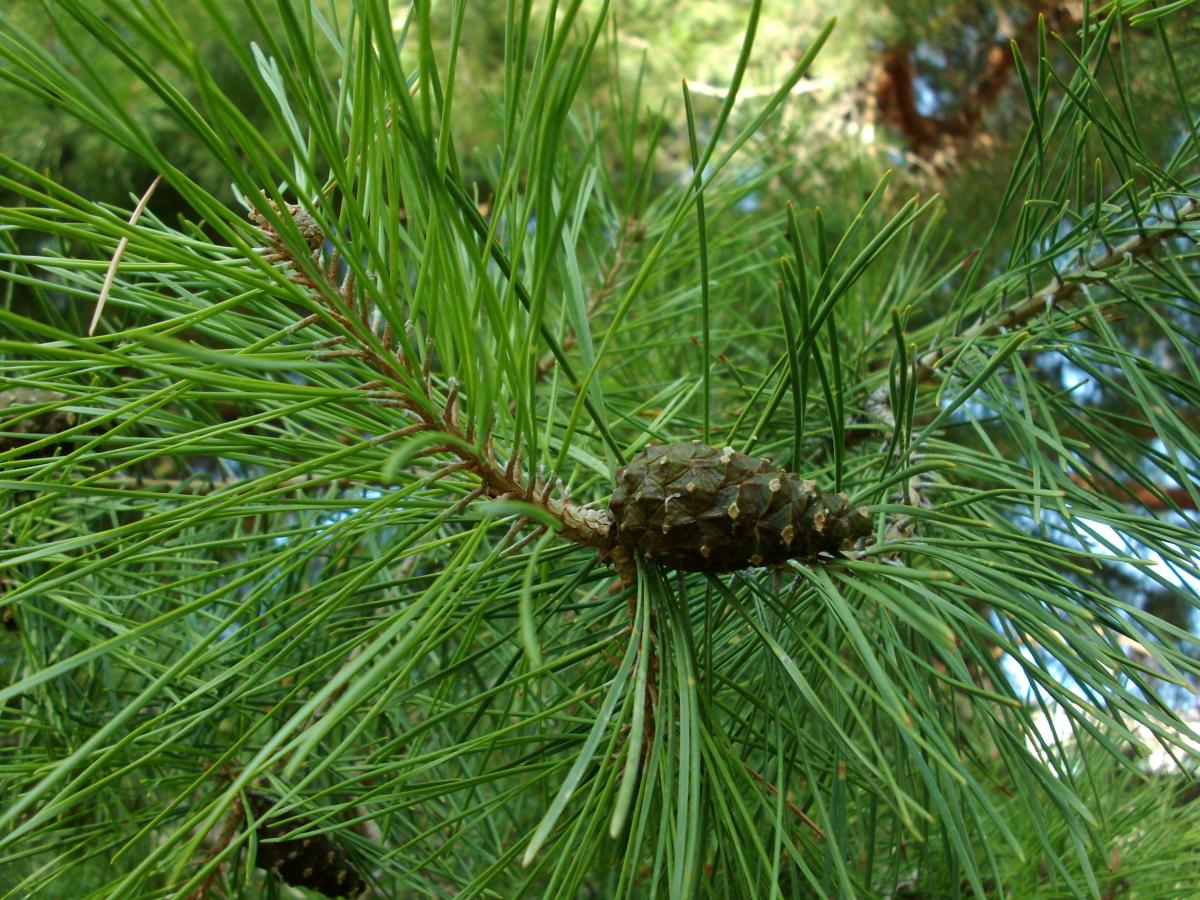
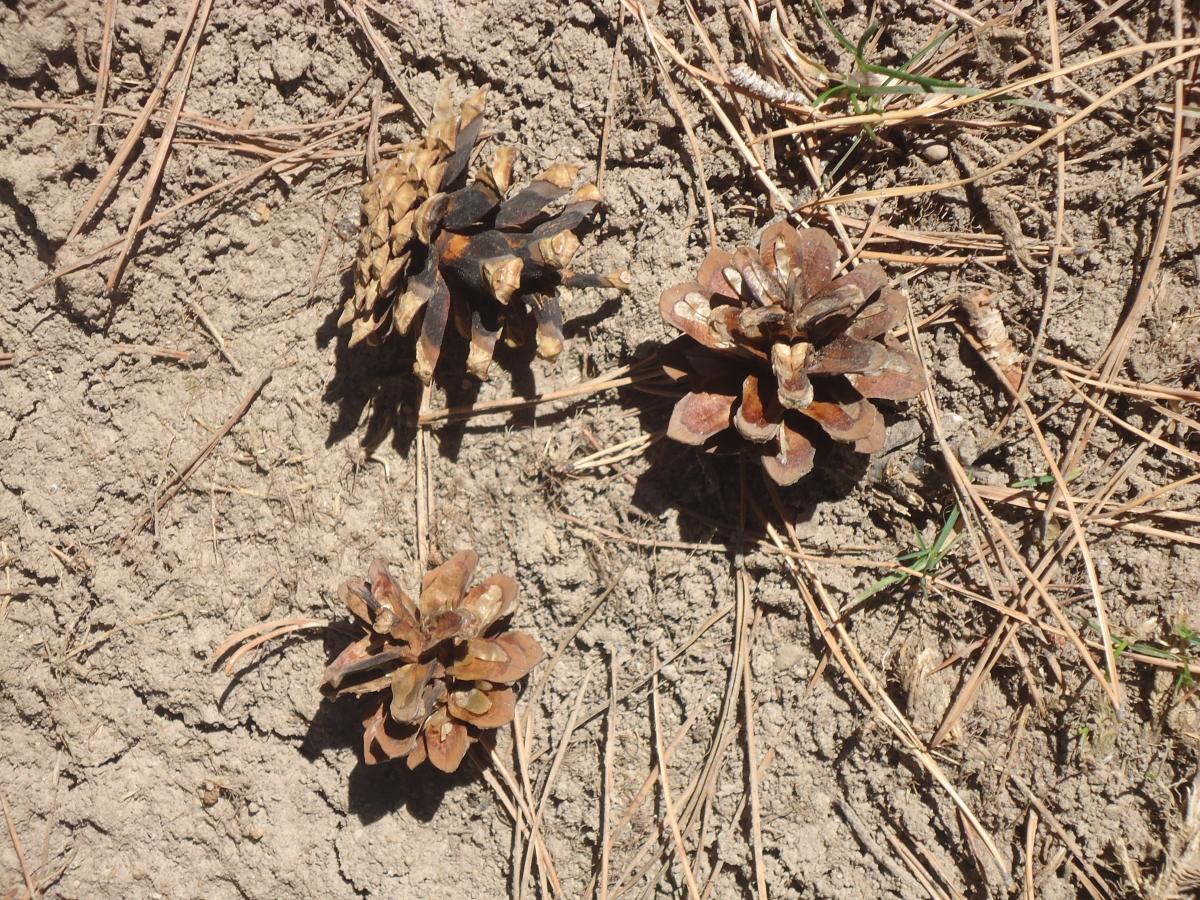
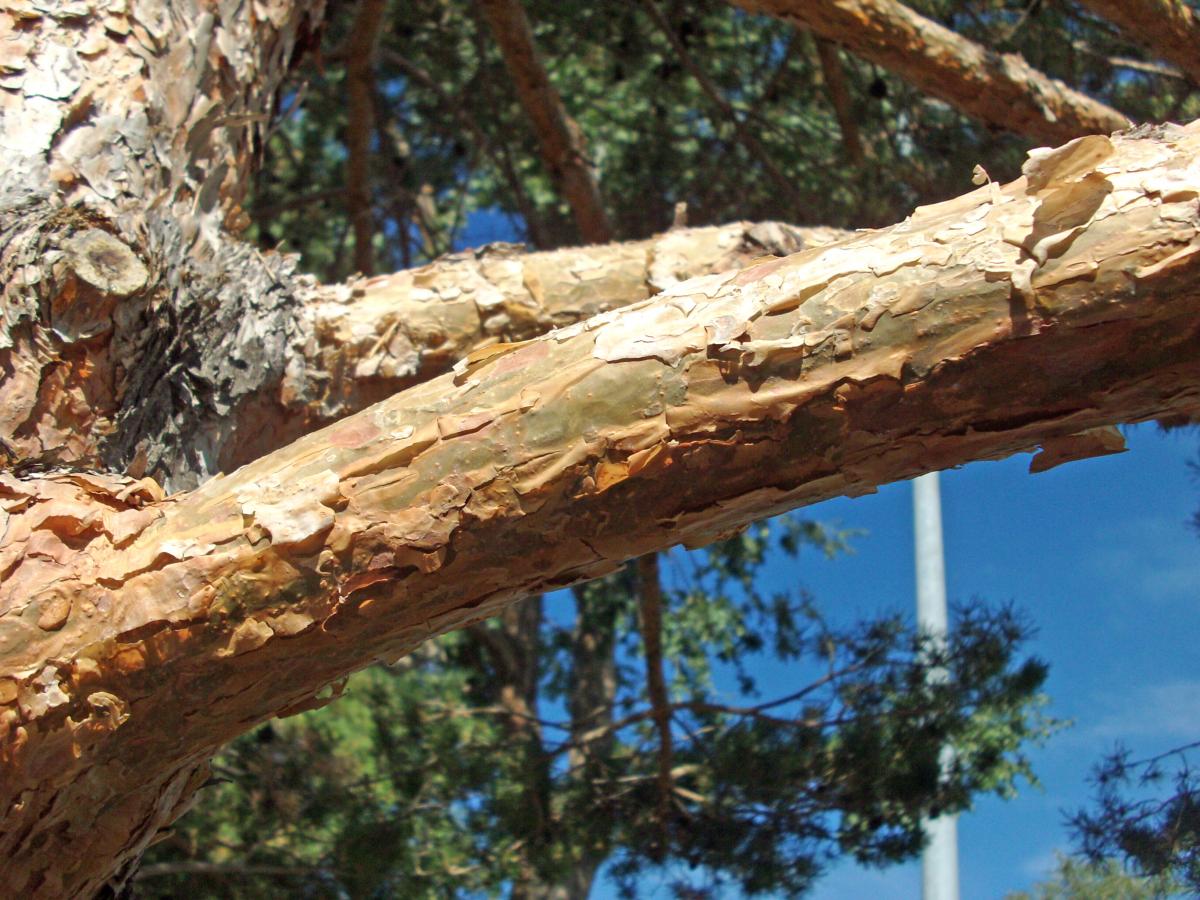
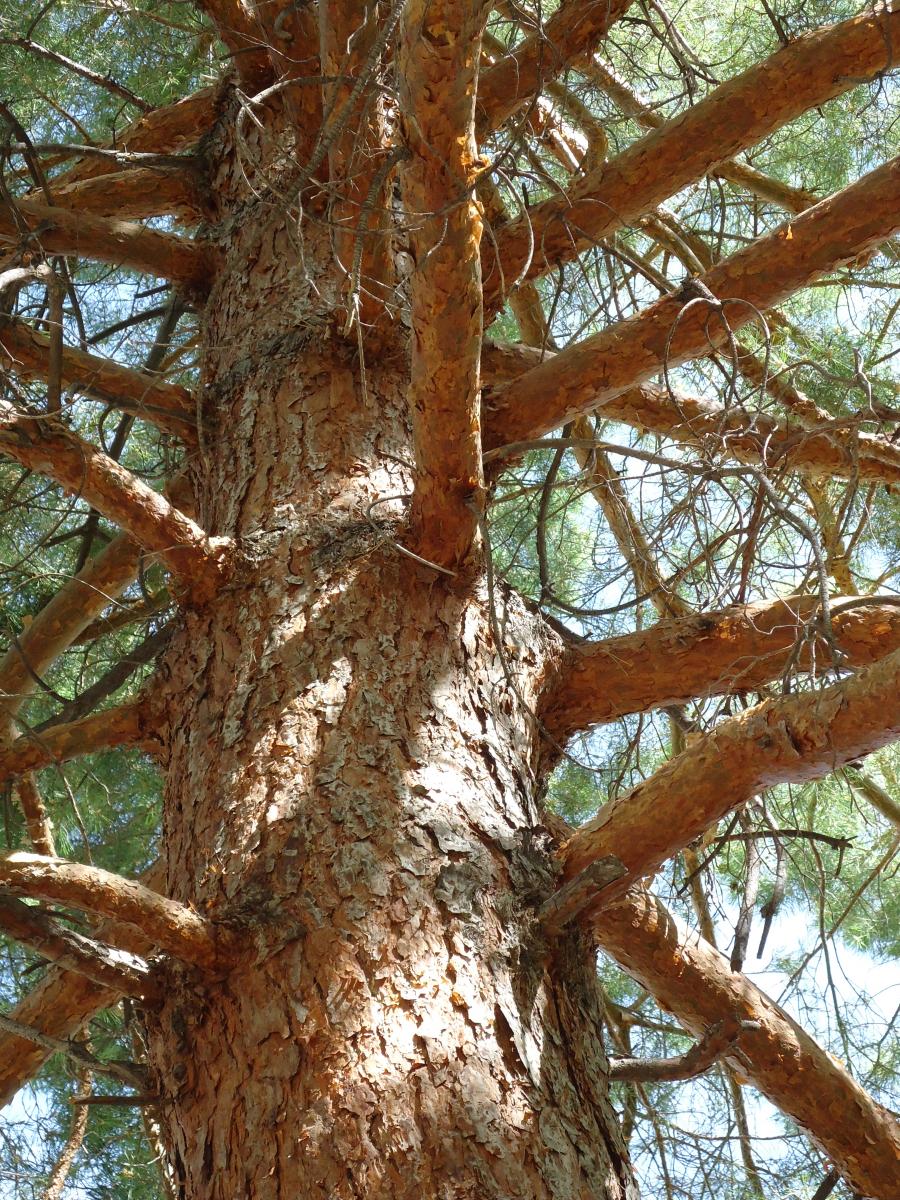

Pinus sylvestris
Leaves: Evergreen. Twisted, 1 to 3 inch long needles grow in bundles of 2. Color varies greatly from yellowish-green to blue-green.
Bark/Twigs: Upper portions of the tree and younger branches have orangish-brown to butterscotch colored, thin bark which peels off in papery flakes. Bark develops fissures and turns dark grey with age.
Flowers/Fruit: Male cones are orangish and release yellow pollen in spring. Small woody female cones are 1½ to 3 inches long, ovalish shape, and gray or dull brown in color. Scales on cones have raised pyramid-shaped tips with no prickle.
Mature size and shape: Large. 30 to 60 feet high x 30 to 40 feet wide. Loosely or irregularly pyramidal shape with negative space between branches. Top flattens and spreads with age.
General information/special features: Plant in full sun. Moist, well-drained soil. Tolerates poor conditions and drier sites well. One of the most commonly used species for a Christmas tree.
Landscape use and maintenance: Good ornamental evergreen tree. Works as a medium screen or single tree. Average growing rate. Low maintenance. Transplants easily and adapts to nearly all climates. Due to its large natural geographic range, there is considerable genetic variation in needle color and plant vigor, so be sure to choose a cultivar that is best suited for your area. Can have a problem with chlorotic or yellowing needles in alkaline soils.
USDA Hardiness Zone: 3 to 7
Family/Origin: Pinaceae – Pine. One of the most widely distributed pines, ranging from Norway and Scotland to Spain, western Asia and northeastern Siberia. Also called Scots pine.
Campus Use: Somewhat common. Can be found south of the Student Services Building (Bld 40) or north of the Erying Chemisty Buliding (Bld 85).
